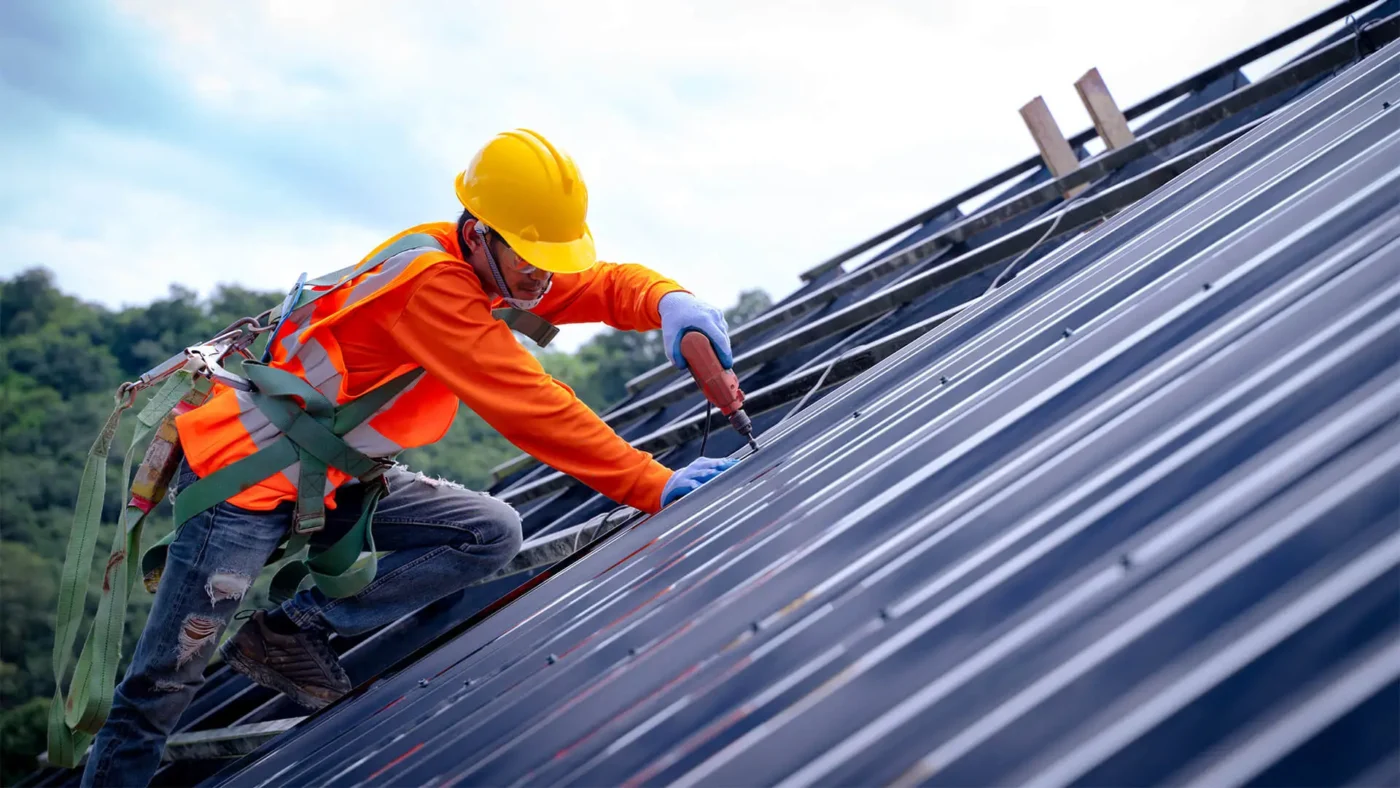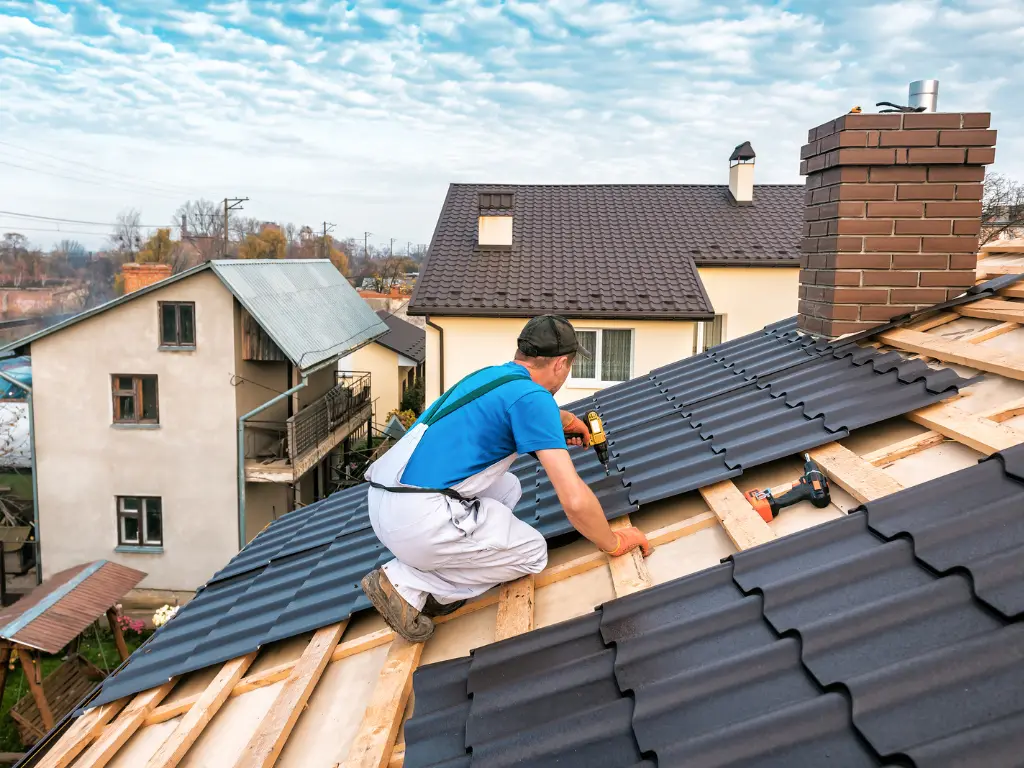Have you ever witnessed an occurrence of raindrops appearing on your ceiling when a big storm is going on? This implies that you could be leaking on the roof. It is frightening and stressful. But don’t panic! In this post we will demonstrate to you how to portion with the emergency roof leaks in an easy and relaxed manner.
Roof leaks are a possibility to anyone. They are capable of destroying your home, furniture and in some cases causing mould. It is really important to know the right way on how to handle emergency leaks in the roof.
So we will take you through it step by step.
What Is an Emergency Roof Leak?
Emergency roof leak refers to a leak that requires prompt fix. It is a common thing which occurs when there is storm and your roof is destroyed by:
-
Strong winds
-
Heavy rain
-
Falling tree branches
-
Hail or flying debris
It is sometimes easy to start small and get big in a leak. This is why you should not waste any time when you realize that something is not going right.
First Signs You Have a Roof Leak
Before water starts pouring in, your house gives you clues. Look out for these early signs:
-
Water stains on ceilings or walls
-
Dripping sounds during rain
-
Peeling paint or bubbling wallpaper
-
Wet spots on the floor
-
Mold or mildew smell
If you notice any of these, you might already be in an emergency. Knowing how to deal with emergency roof leaks will help you stop the damage before it gets worse.
Stay Calm and Think Fast
The first step is to stay calm. Don’t panic. Then follow these steps:
-
Move furniture away from the leak area.
-
Use a bucket or container to catch dripping water.
-
Put towels or plastic around the area to protect your floor.
-
Turn off electricity if the leak is near wires or lights.
These simple actions can stop things from getting worse while you figure out your next steps.
Find the Source of the Leak (If You Can)
Next, try to find where the leak is coming from. But do this only if it’s safe. You can:
-
Go into your attic with a flashlight
-
Look for wet spots or light shining through
-
Trace the water trail back to its source
Sometimes, the water enters in one spot but shows up far away. Roof leaks are sneaky like that! Still, knowing where it starts can help you explain things when calling for help.
Temporary Fixes You Can Try
If you can safely reach the area, you may be able to slow the leak. Here are some quick and easy ideas:
-
Use a tarp: Cover the damaged part of your roof with a waterproof tarp. Secure it tightly with nails or weights.
-
Roofing tape or sealant: If you spot a small hole or crack, use tape or sealant made for roofs.
-
Patch from the inside: In the attic, use a piece of wood and a bucket to guide water safely.
Remember, these are temporary fixes. They won’t last forever. But they’ll help while you wait for a professional.
Call a Professional Roofer Immediately
This is the most important part. You must contact a roofing expert right away. They know how to deal with emergency roof leaks better than anyone else. When you call:
-
Explain the issue clearly
-
Tell them how bad the leak is
-
Share what you’ve done so far
-
Ask how soon they can come
A roofer will check the damage, tell you what caused it, and give you real solutions. Don’t wait too long roof problems only get worse!
Stay Safe During the Leak
Here are some safety tips to follow while dealing with the leak:
-
Never climb on a wet roof t’s very slippery
-
Keep kids and pets away from the leak area
-
Don’t touch anything with wet wires
-
Avoid standing water near outlets
Your safety is more important than your ceiling or carpet. So be careful!
How to Prevent Roof Leaks in the Future
Once the emergency is over, you’ll want to stop it from happening again. Here’s how:
-
Get regular roof inspections (twice a year is great!)
-
Clean your gutters so water flows away easily
-
Trim trees near your roof to prevent falling branches
-
Fix small cracks or damage early before they grow
-
Use good roofing materials when replacing old parts
Learning how to deal with emergency roof leaks also means learning how to avoid them next time.
What Not to Do During a Roof Leak
While acting fast is good, doing the wrong thing can make it worse. Avoid these mistakes:
-
Don’t ignore the leak
-
Don’t try risky DIY repairs in the rain
-
Don’t use weak materials to patch holes
-
Don’t assume it’ll stop on its own
-
Don’t wait too long to call for help
Doing any of these can lead to more damage and higher repair costs.
How Much Does It Cost to Fix an Emergency Roof Leak?
Prices can vary depending on how bad the leak is. But here’s a simple idea of what you might pay:
-
Minor patch job: ₦10,000 to ₦30,000
-
Medium repair: ₦40,000 to ₦100,000
-
Full roof repair: ₦150,000 or more
Some roofers offer free inspections. Others may charge a small fee. It’s always best to ask first.
Insurance May Help Pay for the Repairs
If you have home insurance, check your policy. Some plans cover emergency roof leaks, especially if caused by:
-
Storms
-
Falling objects
-
Sudden damage
Call your insurance company and ask:
-
What’s covered?
-
How much is the deductible?
-
How do you file a claim?
Take photos of the damage and keep all receipts. These help with your claim.
Quick Checklist: What to Do When You Find a Roof Leak
Here’s a super simple checklist to help you remember how to deal with emergency roof leaks:
- Stay calm
- Move items away from the leak
- Catch the water in buckets
- Protect your floor and walls
- Turn off power if needed
- Find the source (if safe)
- Use tarp or tape for quick fix
- Call a roofing expert fast
- Keep children and pets safe
- Check your insurance
Stick this list somewhere in your home so you’re ready!
Why Fast Action Is So Important
Letting a roof leak sit for days or weeks can cause:
-
Mold growth
-
Wood rot
-
Ceiling collapse
-
Damage to lights, walls, and floors
-
Health problems from damp air
Acting fast shows you know how to deal with emergency roof leaks the smart way.
Common Causes of Roof Leaks
If you’re curious, here are the usual reasons leaks start:
-
Broken or missing shingles
-
Cracked flashing (the metal on your roof)
-
Blocked gutters
-
Poor roof installation
-
Old roofing materials
Knowing this helps you keep an eye out next time.
Conclusion: Be Ready, Not Scared
Emergency roof leaks are never fun. But they don’t have to ruin your day. Now that you know how to deal with emergency roof leaks, you’re better prepared than most people.
Just remember:
-
Act fast
-
Stay safe
-
Call the pros
-
Learn how to prevent future leaks
If your roof could talk, it would thank you!


